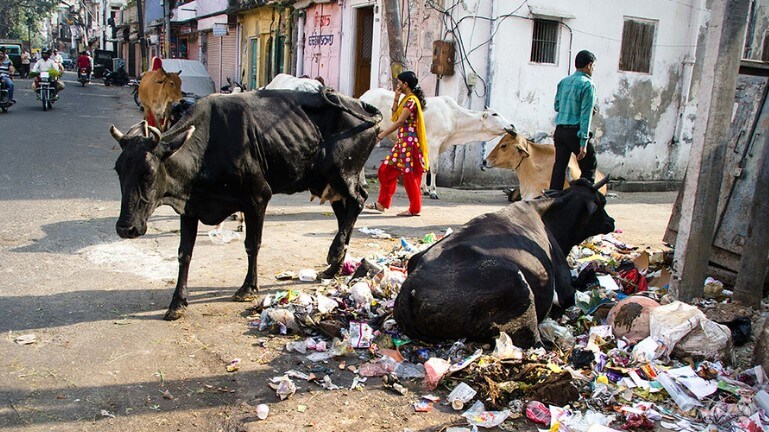
Why is India so dirty: garbage, dirt, stink and animals...
ANDIndia is a great, ancient country, which is simply overflowing with stunning sights and places important for the entire world cultural heritage, unfortunately, it impresses its guests with more than just something worthy of admiration. Any traveler who first came to a major city in India, such as Delhi, involuntarily wonders why is there so much dirt and garbage in india. Sometimes it even seems that India is the dirtiest country in the world.
Garbage, trash cans and strange habits
The problem starts with India is hard to find something like a trash can or bin. This problem will only get worse in the future. But, even if these buckets were everywhere, the Indians most likely would not use them for their intended purpose.
It turns out that if an Indian has garbage in his hands, he simply throws it at his feet. Therefore, when you ride a bus or train, or just walk down the street, then your eyes appear slides, heaps and separate carpet inclusions of garbage in the form of papers, candy wrappers, wrappers, bottles, plastic, fruit peels and much more incomprehensible.
Do not think that public services do not work in India and garbage is not removed at all. After the next scheduled cleaning, the street can practically “sparkle” with cleanliness. Much depends on the particular city and the responsibility of the relevant services of the municipality. However, the problem is that new landfills appear with enviable regularity.
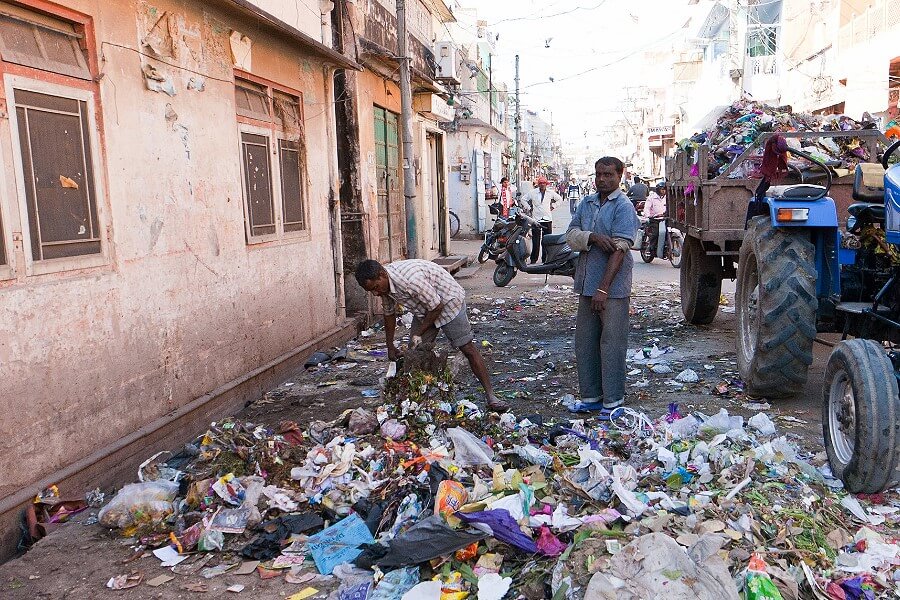
Weird habits like throw garbage at your feet, organize dumps along or in the middle of roads, throw anything in rivers and streams, is not explained by the critical population of individual cities.
Take Tokyo or London for comparison. It is also crowded there, but people do not sit down anywhere on the road in front of the audience out of great need, and phlegmatic cows and lively goats do not roam the mountains of garbage.
A good example in the form of a "mountain stream". McLeod Ganj is a suburb of the city of Dharmsala in the state of Himachal Pradesh, well-known far beyond India. It is also called "Little Lhasa". The fact is that many people from Tibet live there. McLeod Ganj is also the seat of the government of Tibet. It has always been characterized by virgin nature and comparative cleanliness in the suburbs. However…
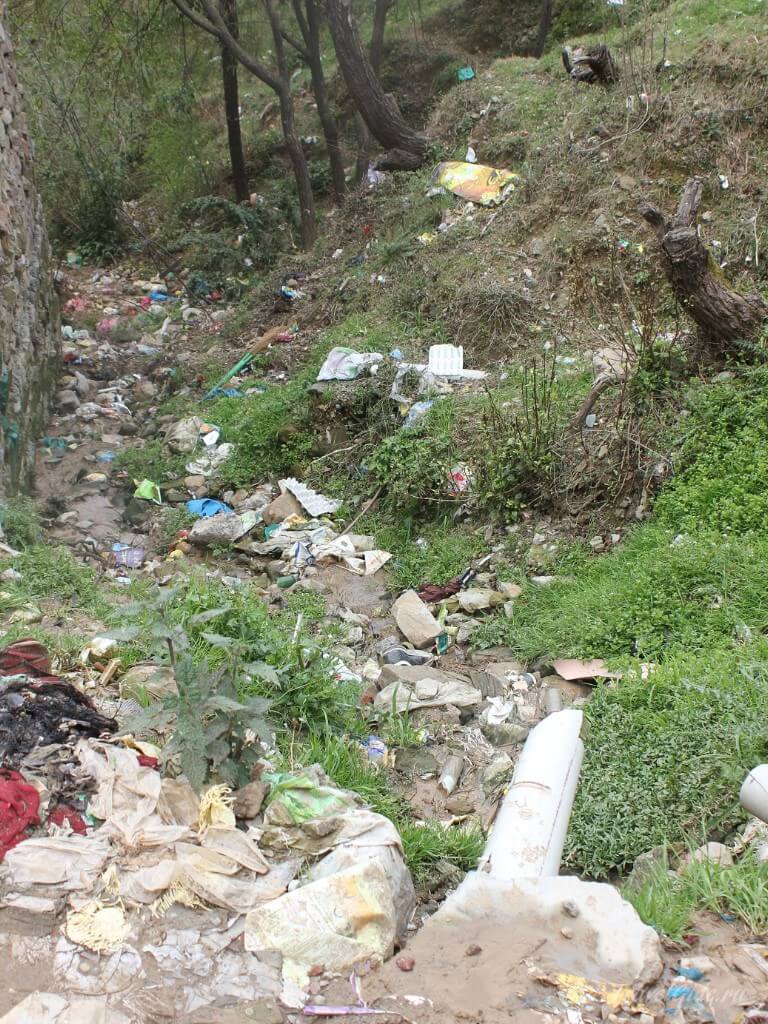
The logical continuation of the individual strange habits of the Hindus is the activity of numerous animals looking for food.
During the day, and even more so after dark, piles of rubbish in the streets attract animals. What does a wide variety of animals, ranging from the usual dogs, continuing with cows, pigs, donkeys, goats and ending with monkeys, chipmunks and rats.
If you hear someone say that India is a "holy land", then know that this person is absolutely right. After all, it is a real miracle that a gigantic epidemic has not yet occurred in the country. This is possible only with the direct and personal intervention of one of the mighty Hindu gods.
Feces and urine on the streets of India
For those who don't fully understand yet: India is a dirty country and you hardly met such a second. Garbage and dirt can be found everywhere: on the street, on the bus, in a public toilet, in a cafe and in a hotel room. And yet India's biggest problem is the "garbage" in the minds of Indians.
I'm sorry for the vulgar word, but a lot of Hindus leave shit behind them wherever they go. Of course, only a small part of them, but in a country with a population of one and a half billion people this is enough. According to a 2014 WHO report, about 50% of Indians met their physiological needs outdoors.
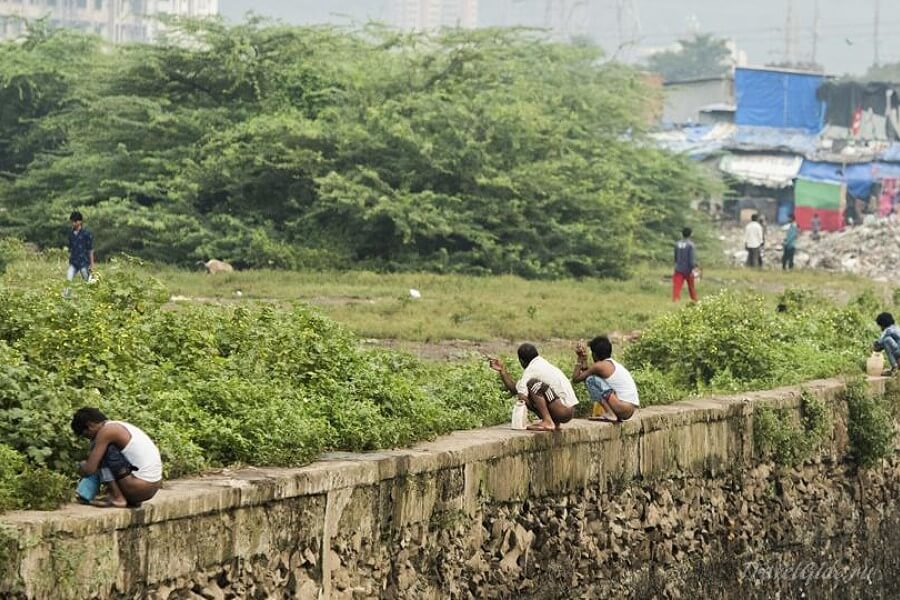
What does this mean in practice? Three simple and short examples for clarity ...
1. Little girl on a shopping street
On a clear sunny day, you are walking down a shopping street in a big city. The clock is almost noon. Suddenly you see a little girl crouching right in front of you. But what does she do? And she just pooped. Just in front of all passers-by.
2. "Football field" in the suburbs of Delhi
Suppose you decide get to Bagsu waterfall in Dharamsala, Himachal Pradesh, India. Leaving Delhi, in the suburbs you will probably see a grassy field about the size of a football. There, squatting, dozens of people satisfy their physiological needs. From the outside, it looks like they're on a picnic.
3. Stops at railway stations
Third and final example. You are successful bought tickets at the railway station in Delhi and set out on their planned trip. Did you know that in Indian trains, passengers take care of the departure of natural needs when the train stops at the next station. That is why you can see small mounds along the train route at the stations. Now you know what it is.
What do we have as a result of all this disgrace? At stations, on the streets, in cities and suburbs, in the morning, in the evening and at noon, a terrible smell hovers in the air.
About the problem of "garbage" in the minds
Returning to the existing problem in the minds of local residents. Back in 2015, as part of the cleanliness campaign launched by Indian Prime Minister Narendra Modi, half a million home toilets were built. Despite this, many residents still preferred to defecate on the street.
It got to the point that special sanitary inspectors began to check the use of home toilets for their intended purpose. The data were entered into a single control information base. This check showed that toilets are often used as ancillary household premises - pantries. The fact is that many Indians still believe finding a toilet in the house is completely unhygienic. More than 40% people in northern India who have a toilet at home admit that at least one member of their family defecates outside.
Dirt in public places
Here we mean a combination of dust and something else that is not particularly terrible, a kind of “homemade” dirt. Often Indians do poor-quality cleaning, to say the least.
In trains and buses on windows, walls and seats, you can often see adhering dirt, as well as a solid layer of dust. In cheap hotels and guest houses, cleaning and hygiene are no better. Fungus and mold have found their paradise in India, "blooming" during the monsoon season.
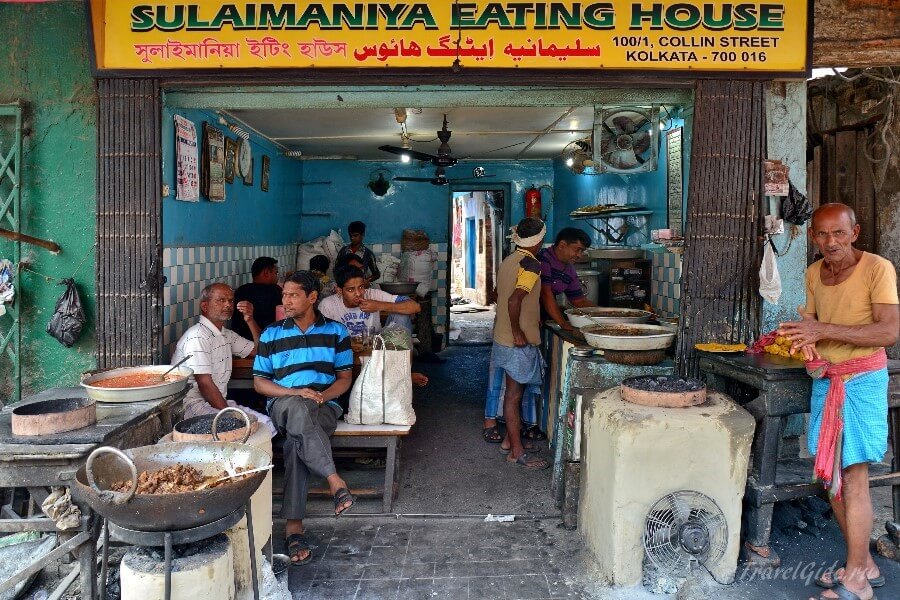
A few words about catering establishments. It is highly recommended to eat in closed establishments. In this case, it is much more likely that the dishes are clean, and they are washed using running water from the water supply. Walking along the streets, you can accidentally see a picture of the process of washing dishes in cheap street cafes.
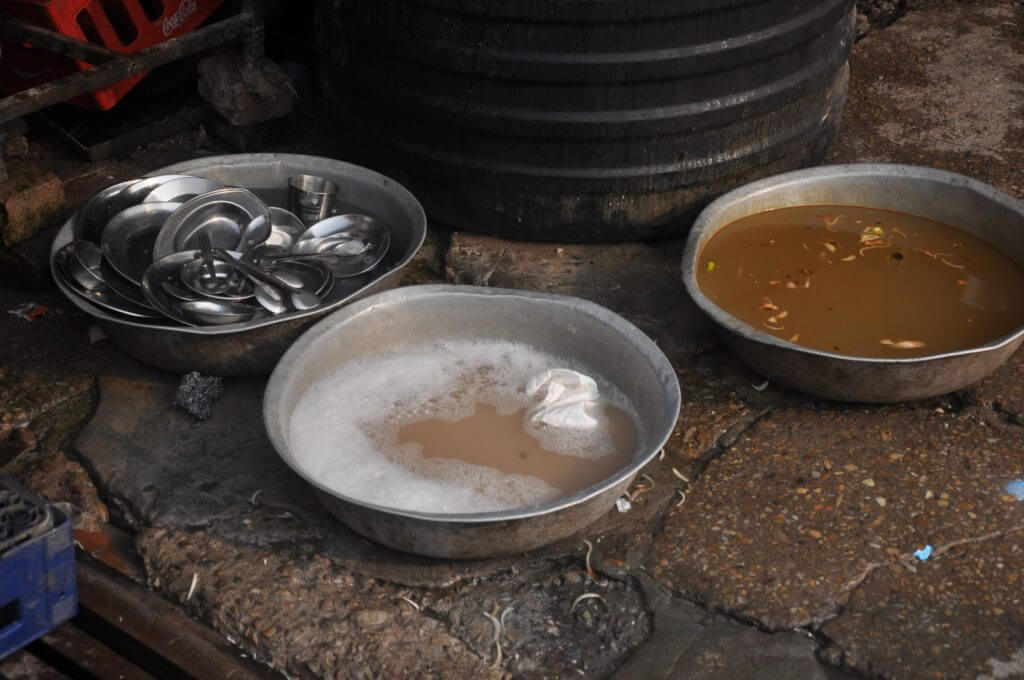
Tell me honestly, if you knew that the dishes are washed in such a “hygienic” way, would you order food in this establishment? That's right - no. So here's another nutritional tip. Try not to eat meat products, but make do with vegetarian cuisine. If you do not live in one of the decent hotels in Goa and do not plan to visit Flea market in Anjuna, and choose what to eat somewhere in Delhi, then limit yourself to noodles or rice with vegetables, local roti or chapati and a bottle of water without gas ...
Tropical climate, burning and smog
All of the above would not be so unpleasant if it were not for the climate prevailing in India - tropical and monsoonal in most of the entire country. The connection between these phenomena is especially acute during the monsoon season.
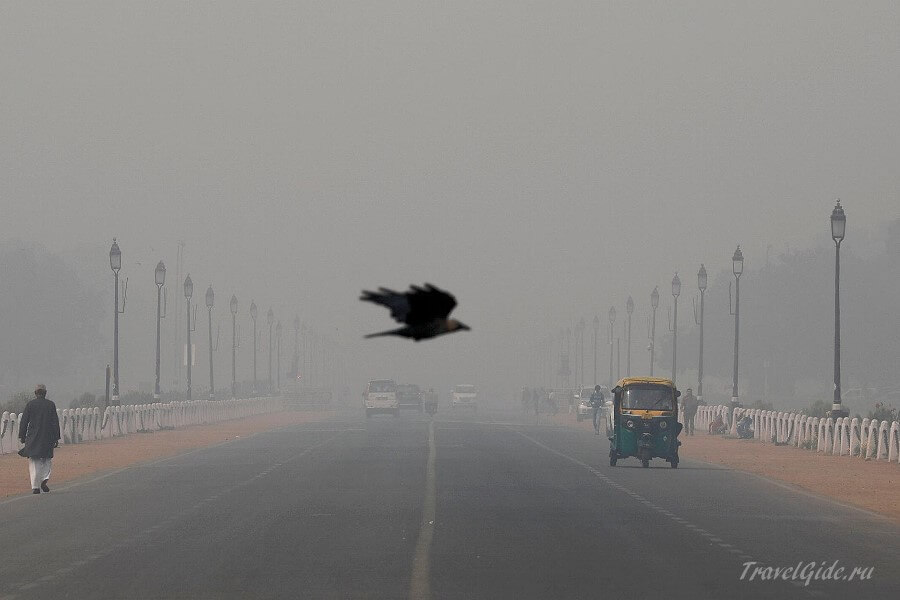
Stepping out of an air-conditioned airport in Delhi can feel like stepping into a sauna. Temperatures around 40 degrees and very, very high humidity keep you moist all the time. At the airport, as usual, it smells of burnt garbage. Most likely brought by the wind from the nearby slums. Well, directly to Delhi there is smog which is felt physically, it is really hard to breathe.
In a word, India simply smells bad. Of course, not always and everywhere, but after a month of traveling through the cities of this country, you will most likely remember only unpleasant smells. Garbage, organic waste, urine, feces lie on the streets, and with such high humidity and high air temperature, it all simply rots. Smell and stench are simply inevitable.
A little more tar for the big picture
I would not like to aggravate the overall picture, but one cannot but recall the washing of linen and clothes. This does not mean the linen that decent hotels wash in automatic mechanized laundries. This refers to the common Indian method of washing clothes in the "nearest body of water", regardless of the cleanliness of this body of water.
Let's take for example the well-known Ganges river and lesser known Jumna river, which is a tributary of the first. By the way, the Uttarakhand state court ruled that these rivers are living beings.
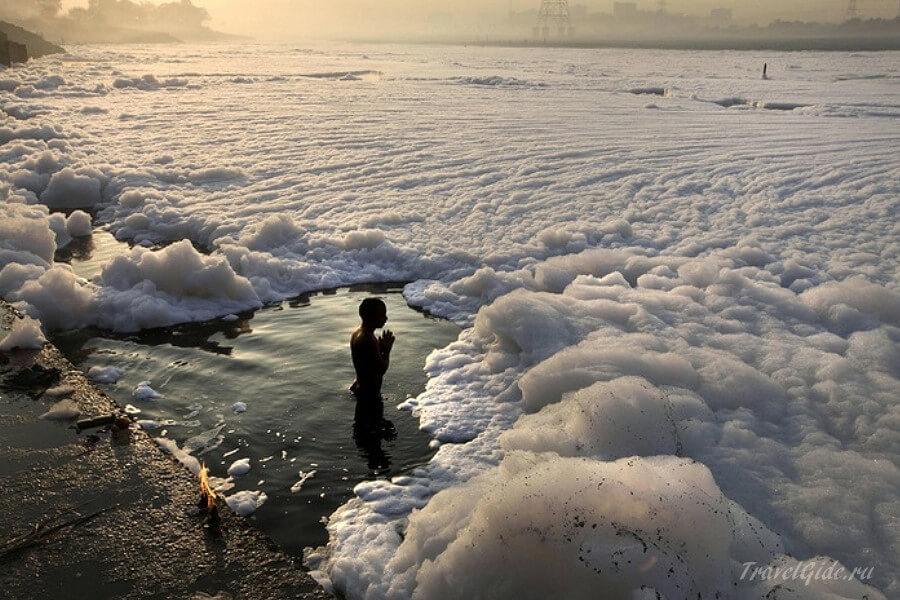
This is another attempt to reduce the process of river pollution, because according to statistics, about 3 million people die every year from infectious diseases after bathing in the Ganges. And although this is only a few tenths of a percent of the number of people who take such procedures, the figure is simply breathtaking.
In a word, the sacred Ganges and Jamna are sheer unsanitary conditions, a place of accumulation of bacteria dangerous to humans. And both of these rivers are actively used by a caste of untouchable laundresses who have been conducting their “business” in the same way for centuries. But after all, not only waste, sewage and just dirt are dumped into the rivers. Remember How and where are the dead Hindus buried??
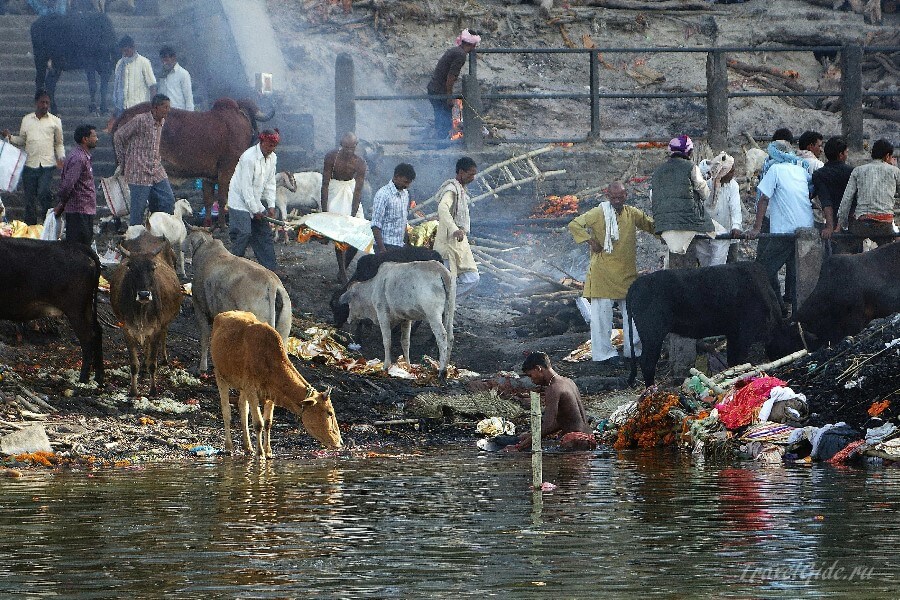
Touching the great rivers of the Hindus, one cannot help but recall the area adjacent to the city Varanasi. The legendary city itself is located in the state of Uttar Pradesh in the northern part of India.
For all Hindus, this is a sacred place that helps them complete their life cycle and go to heaven, naturally. by cremation. However, for some citizens, the Ganges River in the Varanasi region is the only source of livelihood and income.
Many Indians long and diligently filter the cloudy water, which in places turns into a frankly thick slurry. They spend whole days on such a not very pleasant occupation in the hope find gold jewelry: ring, ring, pendant or bracelet.
The fact is that it is not customary for rich Indians to remove all jewelry from the body of the deceased. Thus, the “black seekers” have the only opportunity to somehow earn their living.
Instead of an afterword...
The truth that in India, many people behave as if they live in a pigsty, causes nothing but regret. The widespread use of plastic in its various forms and purposes is catastrophically exacerbating the situation.
Imagine what will happen in the same state of affairs in 15-20 years? Unfortunately, plastic waste tends not to disappear if it is not recycled, but in the old fashioned way it is taken to the forest or thrown to the side of the road. In 20 years, even the most ardent admirer of India will not choose Dharamsala or Darjeeling as a place for a paradise holiday. No one wants to spend their holidays in an exotic landfill.
And, of course, for clarity of all the words, it is proposed to watch a short 4-minute video, with a small part of all these pretty decent outrages.
Also specially for fans of india: Do not take this post as an insult or some kind of artificial cheating. India is a huge, interesting and in many ways attractive country, but every country has its dark sides and this is one of them…
PS There is something positive and I couldn’t help but add...
He called for combining fitness and well-being with cleanliness, leading cleanliness campaignwhich united many people. Governors, Chief Ministers, local leaders, civil society organizations and the general public took part in the event. These collective efforts brought order to some sites and underscored the importance of joint action. The work to create 'garbage-free cities' will continue under the Swachh Bharat Mission 2.0 using scientific waste management and reclaiming old landfills.

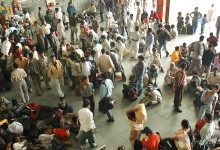
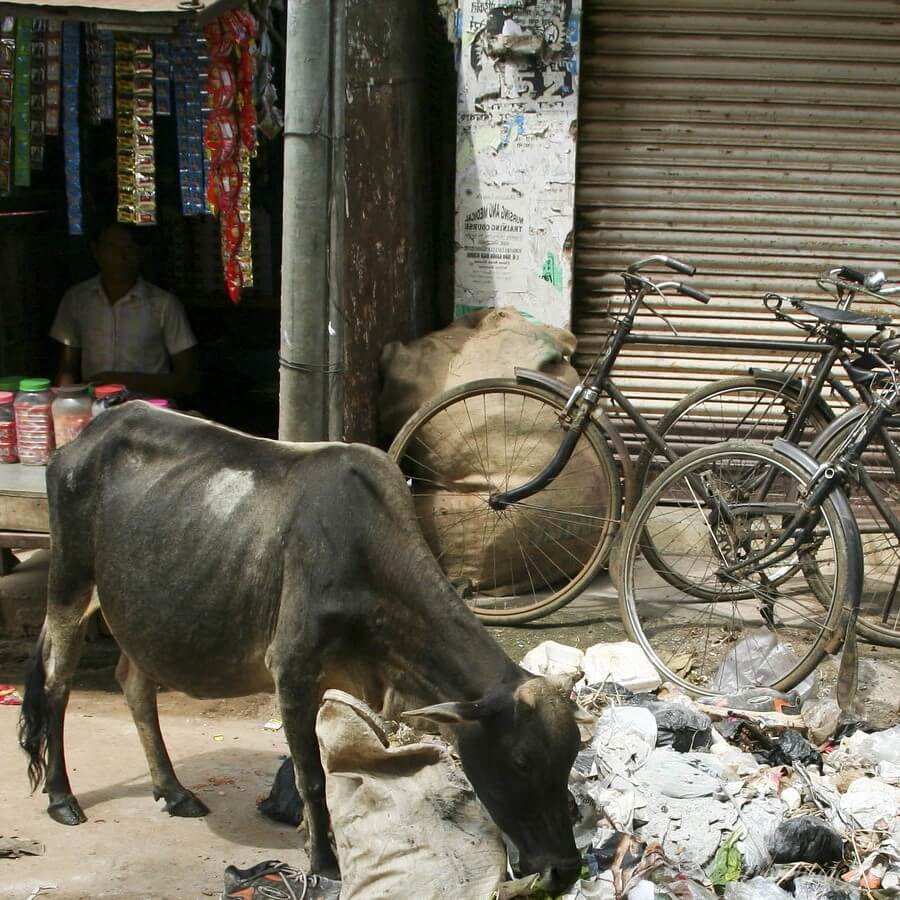

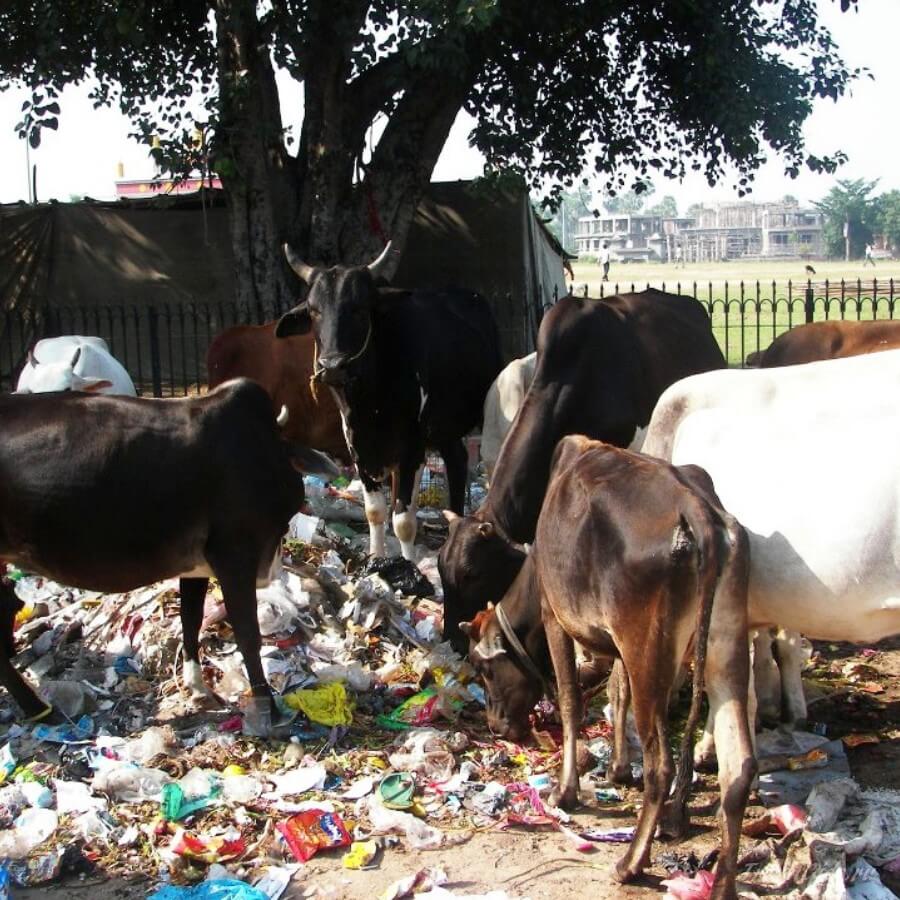
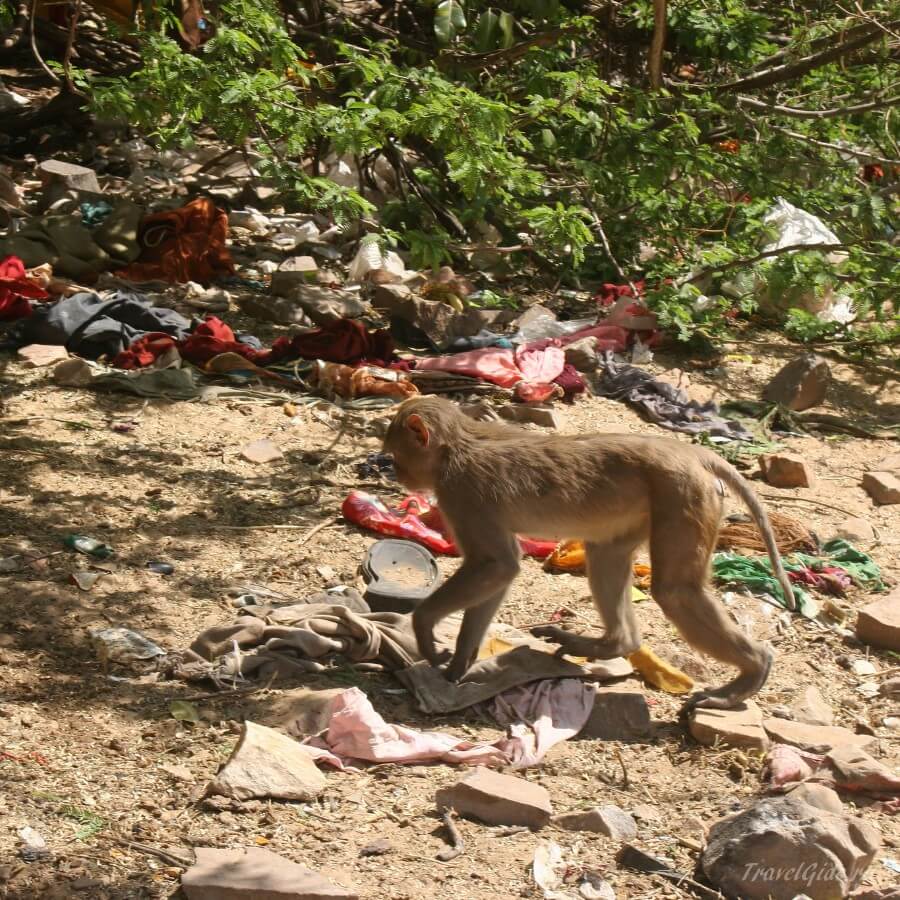
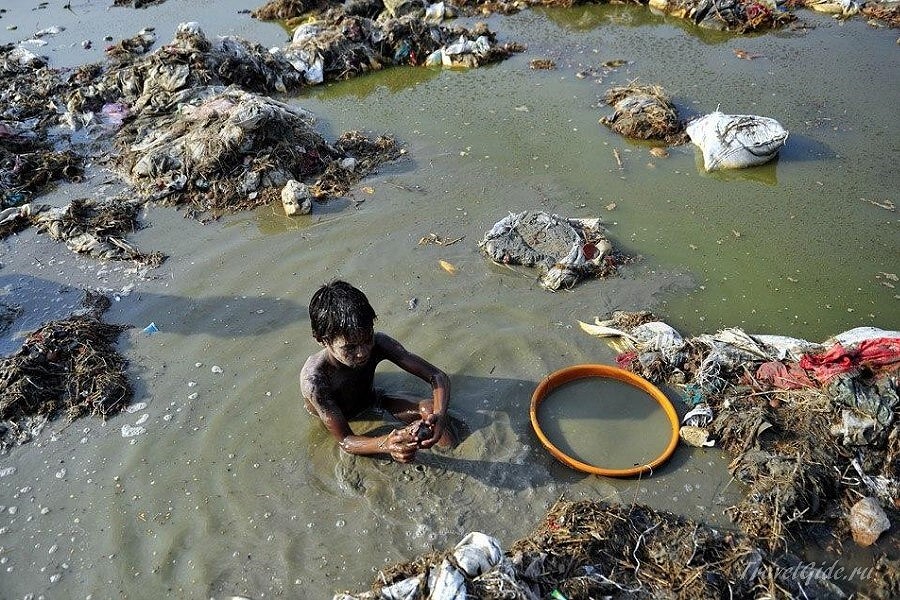
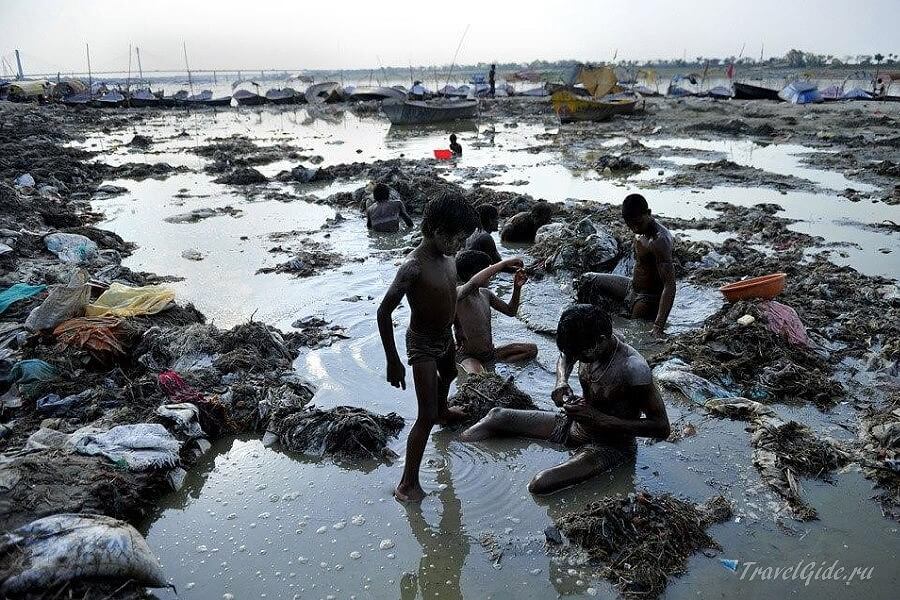
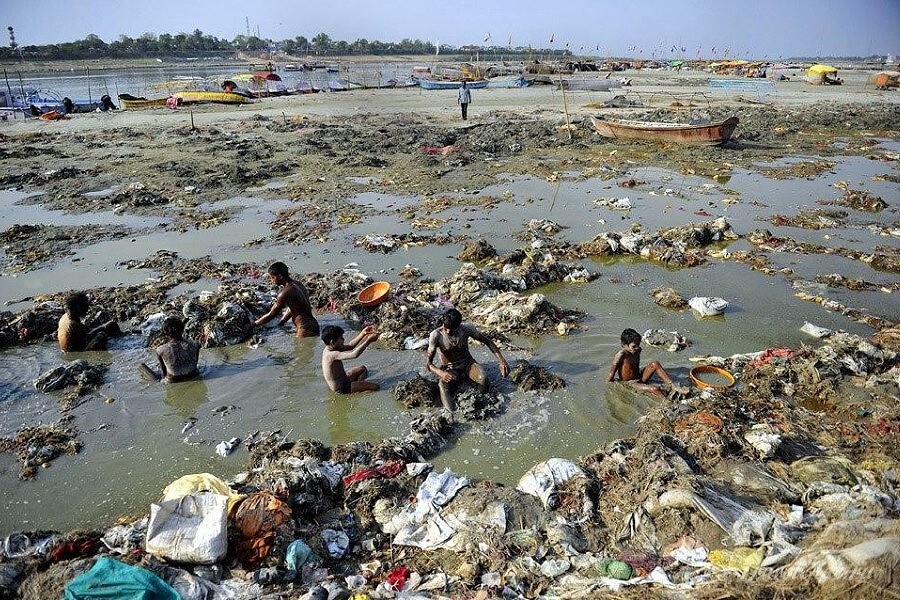
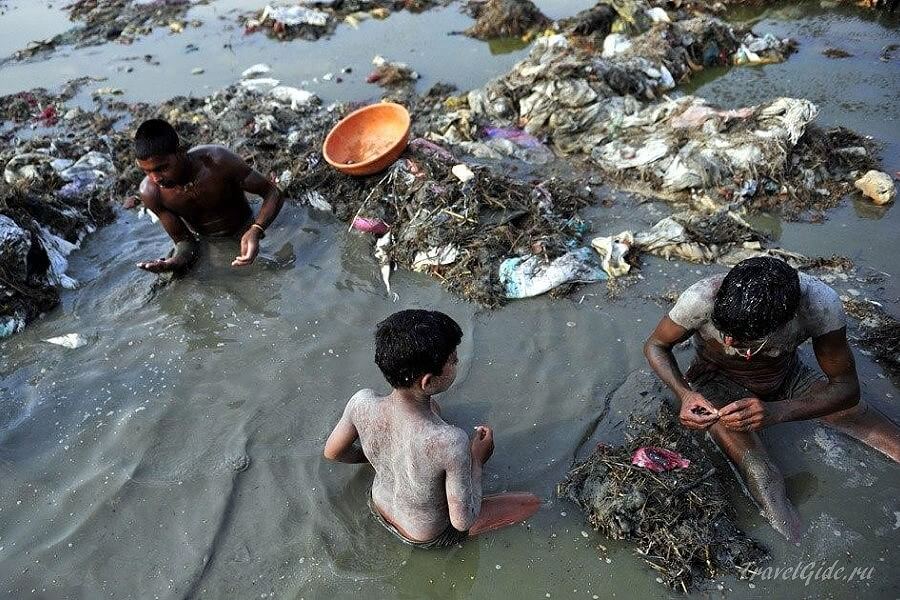
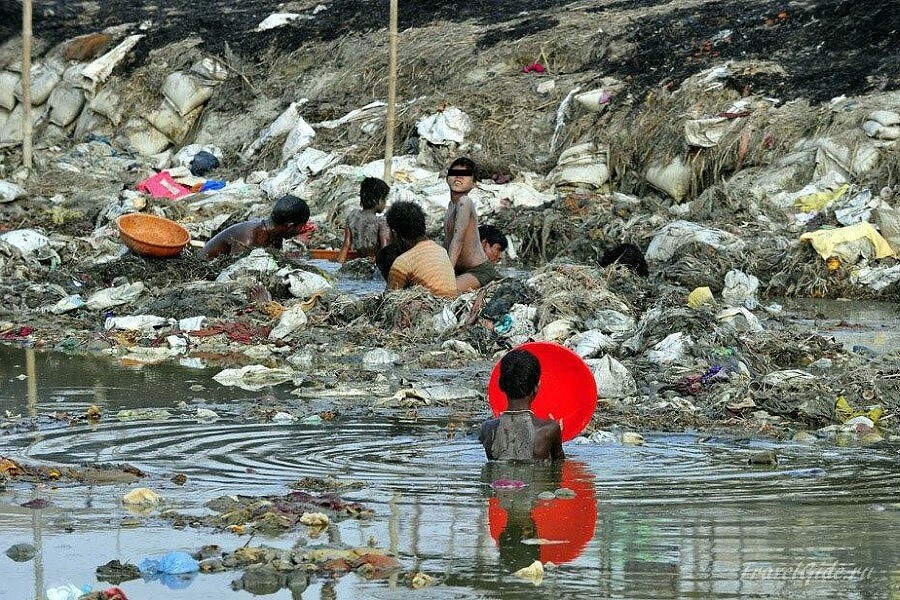
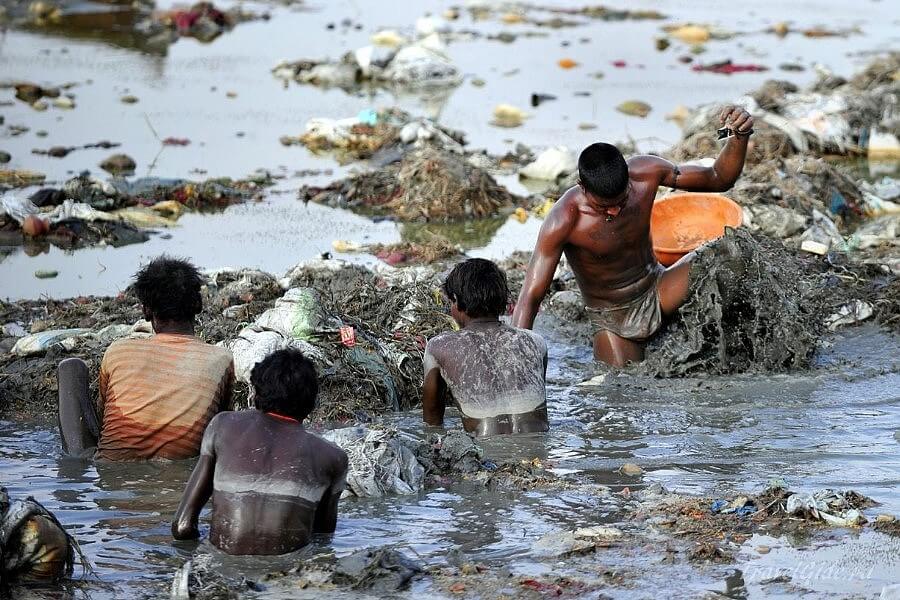
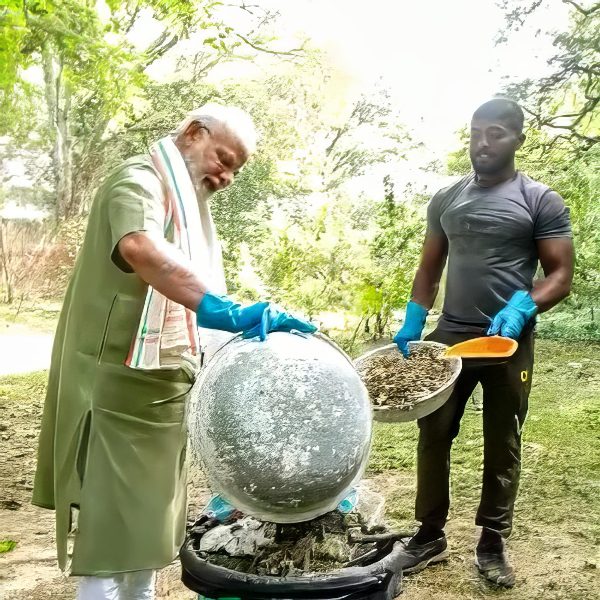

Dirt, garbage - everyone sees what he wants. And we don't have problems with garbage? But the people there are sincere and simple and have a sense of responsibility. Our drivers ride somehow, they are also drunk, and as a result, people die. But in India, have you often seen or heard about fatal accidents!?
It just annoys me how foreigners go to India to see how people live there, and they immediately start whining about what's wrong with us, and immediately say what needs to be changed in this country. India is class, and what remains in my memories is what is cool in India, and, like in other countries in Asia, I would still go there again and again!
Everything is right - sincere and disinterested there is nowhere further. Get ready immediately and fly there without postponing this flight for tomorrow, and you can stay there to live! It seems that you do not see any difference between European civilization and the country that is still wild, dirty and clean. We are far from Switzerland, but just compare the flourishing on the Ganges in a haze of smog, with floating charred corpses and shitting Indians, and the dawn on the Moscow River and everything will fall into place.
And I personally like to read the opinions of fans like you, Maxim: “But in India, have you often seen or heard about fatal accidents!?” (and even with exclamation and question marks for better effect).
I agree, I have not seen or heard, but I can read the available official sources, do we have the Internet? Well, let me quote:
“According to the WHO (I think you know what it is), road traffic injuries are the sixth leading cause of death in India with a higher proportion of hospitalizations, deaths, disabilities and socioeconomic losses among the young and middle-aged population. [6] Road traffic injuries also place a heavy burden on the health sector in terms of pre-hospital and emergency care and rehabilitation.”
(Source: Journal of Orthopedics, Traumatology and Rehabilitation, Info: National statistics of road traffic accidents in India-2013)
We will never have such problems with garbage, I don’t understand how the Indians have come to this!!!!
We will have such problems if the population per square meter is equal to the Indian one.
No, we won’t have such a problem, because we have a different mentality. I myself always carry the trash to the trash can or trash can, even if I carry it for a very long time, I still won’t throw the trash on the ground. And many people do the same. It's a mentality. Our people have already begun to get used to the rule: “It’s not where they sweep, but where they don’t litter.”
So you are used to the pigsty and live in it, and this is normal for you. How much garbage is there in the city. There is not so much in the trash!
Of course, there is enough dirt and garbage in India, but this is not the only thing that determines the level of civilization. In general, a lot depends on what you mean by the concept of civilization - the progress of technology and the eternal pursuit of money, or the ability to be free, have more time for the family, have a modest life, eating natural food without chemicals. I personally prefer to live according to the second scenario
Natural food in India, no chemicals? Ancient myth. Everything is flooded with pesticides, the water is terribly polluted, the atmosphere is also polluted, in large cities there is a constant deadly smog. In a word, India is not free from the pursuit of money, and all the "cute" Indian habits are a plus.
What prevents you from fulfilling your dream and starting to live according to the second scenario? Become a free person, and it will be possible to shit anywhere, forget about trash cans and hygiene, everything is just class :))
I have been to India several times - at different times and in different regions. The last time I was there was in July 2019. Yes… it’s hard to disagree with many of the statements in the article about dirt and garbage and certain strange habits. But I can still live there, although you cannot call an ideal country. When you move away to the provinces, India wins. She knows how to be clean.
I just want to say that India is the most multiethnic country in the world. It's such a subcontinent, so large and so diverse, that it makes it attractive. It is a federation consisting of many states, like the United States. Let's keep in mind that different parts of India have different culture, history, cuisine, customs, often language and even laws.
Residents of Mumbai often despise those who live in the north - calling them scammers. In turn, people from the north say about those from the south that they are "uncivilized."
In any case, it is worth trying to find out such a variety. And any traveler in any country needs to be prepared for everything: both good impressions and negative ones.
Unfortunately, many people in their travel blogs or just on the forums write a little about Indian realities. Everyone is trying to practice eloquence, describing the unbearable lightness of being and the indescribable atmosphere of universal friendliness. Before the trip, I read about 100 articles and reports about India and talk about all these things in passing, just a couple of words, and then again eloquence - as a result, the culture shock could not be avoided, although this is not the first time I find myself in a poor country.
And in the past in Europe, some people buried the dead in trees. These were their habits. I'm talking about burnt bones in river water and culture shock.
Yes. India seems dirty to me, but not everywhere and it all depends on where you go. The same as in China, Pakistan or Afghanistan. In addition, it is also very dirty in places.
Yes, the Ganges with its funeral is actually disgusting, but you can go to other places where it is not so disgusting.
Many of the pictures in my opinion resemble Chinese propaganda. They have a campaign going on right now against India because India is China's competitor, just like there are A LOT of people in China. Following the competition is a tense situation with Pakistan, which is partially supported by China. In general, go to another India ...
Dirt in India is explained simply: India is an agrarian country, with appropriate beliefs and worship of the Earth. Since ancient times, Hindus believed that everything that was taken from it should be returned to the Earth. This throws everything to the ground. And it worked as long as they threw fruit peels, food, and other degradable debris onto the soil. Something decomposed, something was eaten by animals. But after the advent of asphalt and plastics and the expansion of cities, this stopped working and turned into a real problem. Conditions have changed, but faith and habits have not…
Tin!!!Just ass!!!India is the most oppressive country!!!!
The point is not in solid waste, nor in its quantity or morphology - but the fact is that countries cannot process solid waste with 100% wastelessness and with 100% environmental safety, although such technologies already exist. Old landfills, oil sludge, lignin and other carbon-containing wastes are easily recycled. For example, a plant from scratch, on a turnkey basis, with a capacity of 200 tons of landfill solid waste per day, will cost 10-12 million euros, with a payback of up to 12 months. But the next 200 tons of processing capacity will cost the plant 7-8 million euros. Ecology - in the "flue gases" there is almost no carbon dioxide, but only water vapor. No furans, no dioxins, no benzopyrene, no chlorine, no sulfur compounds. There is no complete waste, even slag is processed into a useful product!!! The end product is synthetic oil for refining, gasoline, diesel fuel, alcohols, acids, and much, much more. Fees from the people for the disposal of solid waste are not required, only for export! From the processing of MSW, you can make a profit, the value of which even the oil industry never dreamed of. 9183132090. They buy, build incinerators and compost solid waste tails - this is done only by stupid idiots, for whom the prison cries. In principle, in India, you can make good money, if you have a good partner-investor or a loan,
Garbage in the minds of people. Where they do not litter, it will be much cleaner anyway. if this is the situation in India, then it suits the Indians themselves. God forbid they give a shit on our street ...
Our Russian citizens litter much less than many foreign ones, this is firmware. Thank God that it is. I saw how, for example, in NY they clean the beach with a tractor, in the evening, after people visit ... there are also mountains of garbage, though without Mr. ... And only a few citizens leave garbage on the beach. The number is disproportionately smaller. Of course, we have our own difficulties, but on the whole, the situation in this matter is much better.
I was preparing for a trip to India, reading, watching, studying, however, I did not expect at all that the situation with garbage, homeless people, unsanitary conditions and steep slopes was so severe. In Delhi, almost all areas of the city are like that. Behind the fence of the villa, a homeless person can sleep, eat right there, do everything else right there.
Now we are in Goa, of course, the tourist areas are very different, we are in the southern part, where there are chain hotels, but it’s worth walking around the area a bit to understand what is the same here, mountains of garbage, bonfires, animals, etc.
A day later we fly to Mumbai, I think about this city with fear, if it were my will, I would cancel the next 3 days in the largest city in India by population, but the plane tickets have already been bought and it is impossible to change the dates.
All of the above greatly spoils the impression of cultural and historical values, architecture, etc.
I don’t agree about good nature either, as everywhere, you can’t call the population completely good-natured, in tourist places there are a lot of annoying merchants, beggars who directly don’t let you pass. Even the guide, who was booked at the hotel, asked for tips so much that there were only 2 ways out: pay, push away by force in order to finally say goodbye to him. Tip, my friends, tip, for the service, he said, probably for holding the water while we were taking pictures, he took 30$ or for taking it to the overpriced souvenir shop, where he is clearly unfastened, for the guests brought.
And yes, India is beautiful.
Very interesting article about India! And a warning about the phenomenal littering of this great country. Yes, everything is correct - those who have visited India note this feature almost in the first place. All this coexists with the most interesting ancient monuments, museums, and wonderful landscapes. This is the reality, there is no escape. A land of contrasts. And it’s unlikely that anything will change in the foreseeable future. This philosophy and practice of life has evolved over thousands of years. They simply cannot live any other way, at least on their own land.